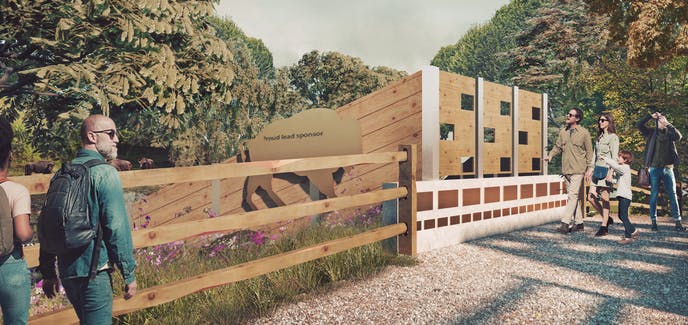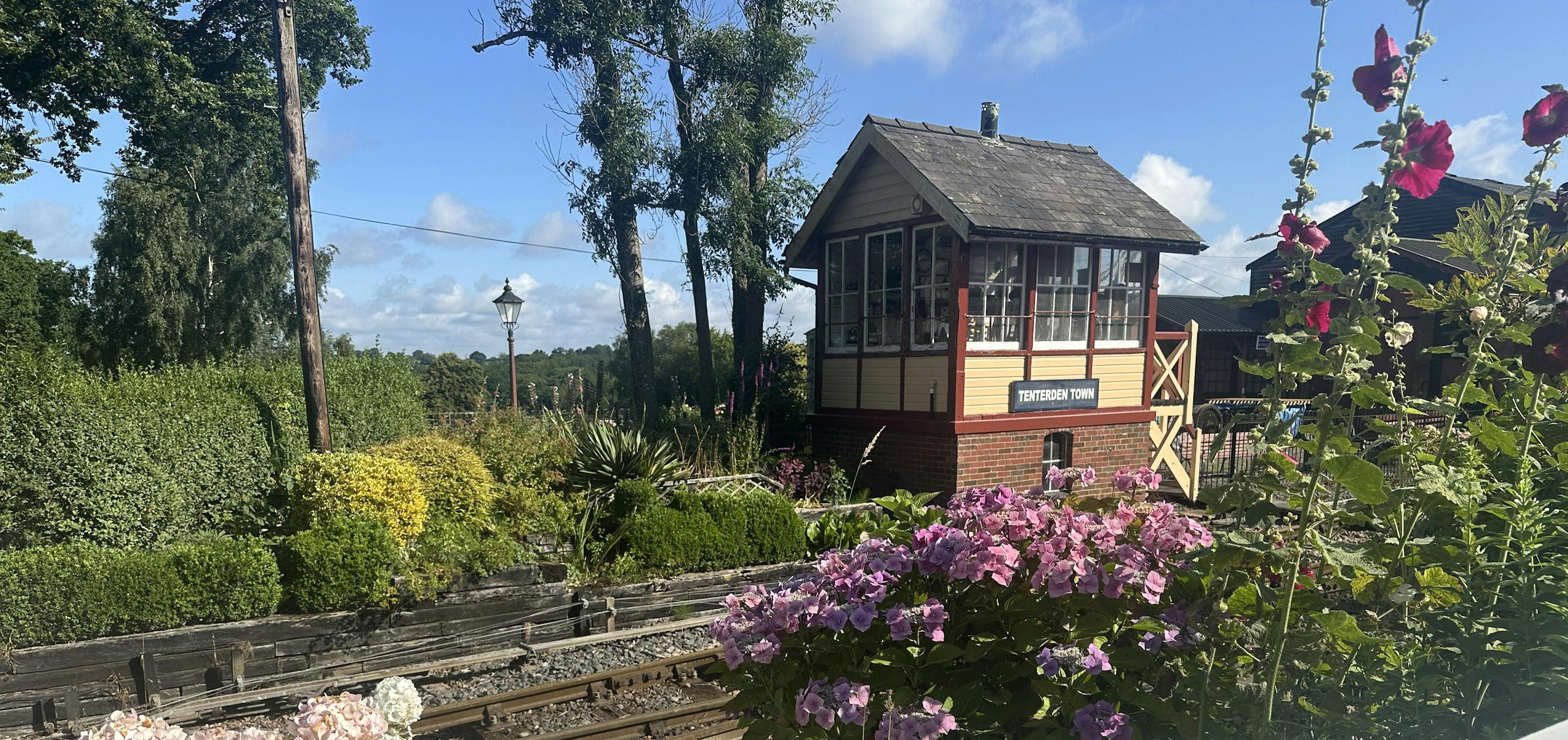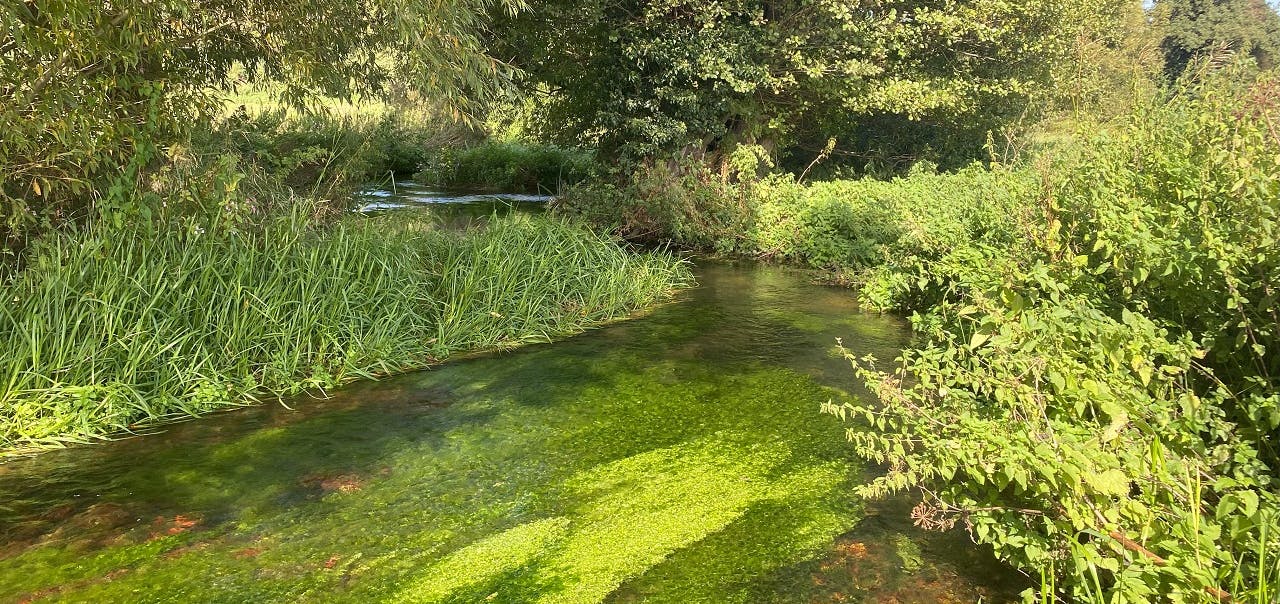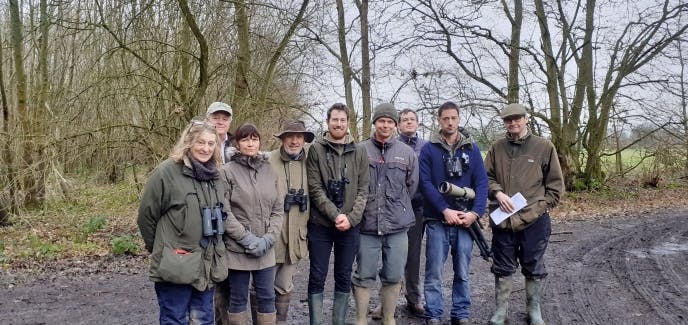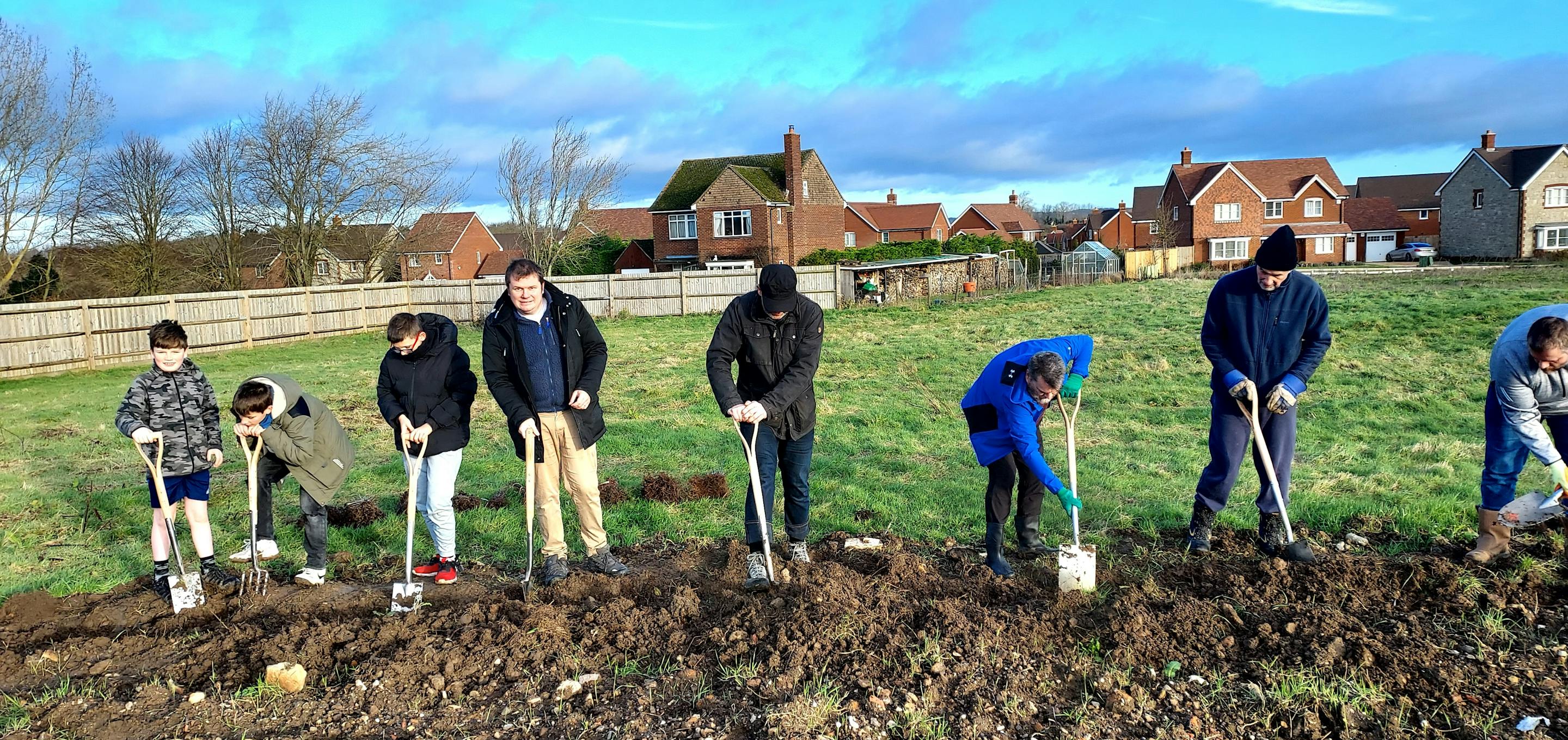
Biodiversity Net Gain at Boughton Monchelsea
In recent years we have been working with developers and landowners across Kent to develop Biodiversity Net Gain (BNG) projects that mitigate the impacts of development and improve sites for wildlife and people. A prime example of this is our work with Boughton Monchelsea Amenity Trust, who this year began on-the-ground works that are fully funded by voluntary BNG offsets. This blog explores how we worked with BMAT and a local developer to make this happen.
What is Biodiversity Net Gain?
Biodiversity Net Gain is the government’s standardised method of quantifying the overall biodiversity value of sites and determining how any changes in land use would change this value to result in either a “net gain” or “net loss” in biodiversity. The calculation is performed using Defra’s BNG Metric, which uses a range of ecological parameters such as a habitat’s type, condition, distinctiveness, and landscape context to give an overall biodiversity score (referred to as number of BNG units).
A site’s score can be improved to create a “net gain” in two ways. The first option is to restore its condition, such as by carefully managing existing habitats to support more species or removing invasive weeds. The other option is to replace a low quality habitat with a more distinctive one, such as by planting trees to create a native woodland on a previously species-poor grassland.
BNG has been used for several years to determine the impact of urban developments, most of which are required to demonstrate no net loss in biodiversity. However, this January it will become a legal requirement for most new developments to demonstrate a minimum of 10% biodiversity net gain on their sites, or else buy “offsets” by paying for habitats to be created or restored nearby. However, some developers are already including minimum BNG uplift requirements in their own company policies and have been purchasing offsets on a voluntary basis.
The History of Boughton Monchelsea Amenity Trust (BMAT)
Boughton Monchelsea is a traditional Kentish village just south of Maidstone. It has a rich history, with evidence of an iron age settlement at Quarry Wood, remains of a roman bathhouse and villa, and a famous ragstone quarry which provided the stone for Westminster Abbey. It is characterised by handsome timber framed houses and grade II listed ragstone church nestled within the rolling open countryside typical of Kent.
Despite its charm, during the late 20th century expanding urban development meant Boughton Monchelsea was at risk of becoming engulfed by Maidstone’s encroaching urban sprawl. As a reaction, the parish council began acquiring land around the village to protect it from development, and set up a charity, Boughton Monchelsea Amenity Trust (BMAT), to hold and manage the land on its behalf. Over 30 years on, BMAT is now responsible for around 325 acres of land in and around the parish. Much is leased back to tenant farmers, while the rest is managed as recreational green space for the benefit of the community. It is run by a team of dedicated volunteers who are passionate about maintaining and improving natural resources for their local community.
While its purpose was simply to prevent urbanisation and benefit the community, BMAT has since grown to appreciate the importance of using its natural resources to fight the increasingly urgent climate and biodiversity emergencies. As such, it has outlined its six core missions:
- To contribute to climate change mitigation by acting locally to impact on outcomes.
- To support greater biodiversity.
- To increase and enhance natural habitats.
- To enhance health and wellbeing of residents by improving access to greenspace, encouraging exercise, and improving air quality.
- To enhance flood resilience and reduce drought impact.
- To support improved contact with and understanding of nature.
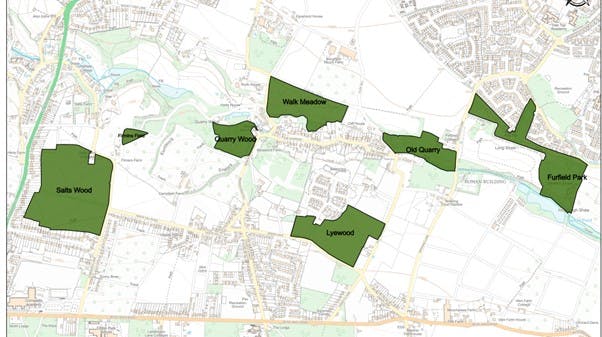
Kent Wildlife Trust have been working with BMAT for several years now to help manage its land to maximise its green spaces for wildlife and people. A few years ago, the Trust created Salts Wood, a 32-acre woodland with accessible paths, which has proven very popular with residents who found it a huge asset during lockdown and beyond. In addition, there are many areas at various stages of rewilding across the parish, with a mix of woodland, hedgerows, grassland, wildflowers and scrub.
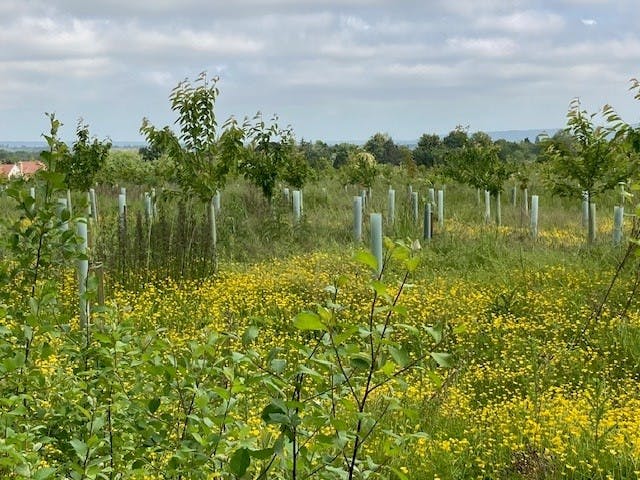
However, such works are often expensive and the ability of BMAT to achieve its mission impact has been limited by funding, which largely relies upon charitable donations from members of the local community. Therefore, Biodiversity Net Gain has created a valuable funding mechanism to deliver ambitious long term nature restoration projects on BMAT land that would not be otherwise possible.
How Biodiversity Net Gain is transforming BMAT sites
Adonis Blue began working with BMAT in 2021 to help assess the potential for BNG investment to restore one of its recently acquired sites, Lyewood. Previously a chicken farm, Lyewood was more recently used by builders working on the adjacent housing development and was left in poor condition with low species diversity, areas of bare compacted ground, and scattered construction debris. This “blank canvas” provided an excellent opportunity to generate significant biodiversity uplift while creating a beautiful community space that is easily accessible, rich in wildlife, so a valuable place for Boughton Monchelsea citizens to enjoy the benefits of nature. This site’s natural assets aligned well with the needs of a developer client of Adonis Blue who were seeking voluntary BNG offsets in the local area and were happy to fund the site’s habitat restoration work and 30-year management.
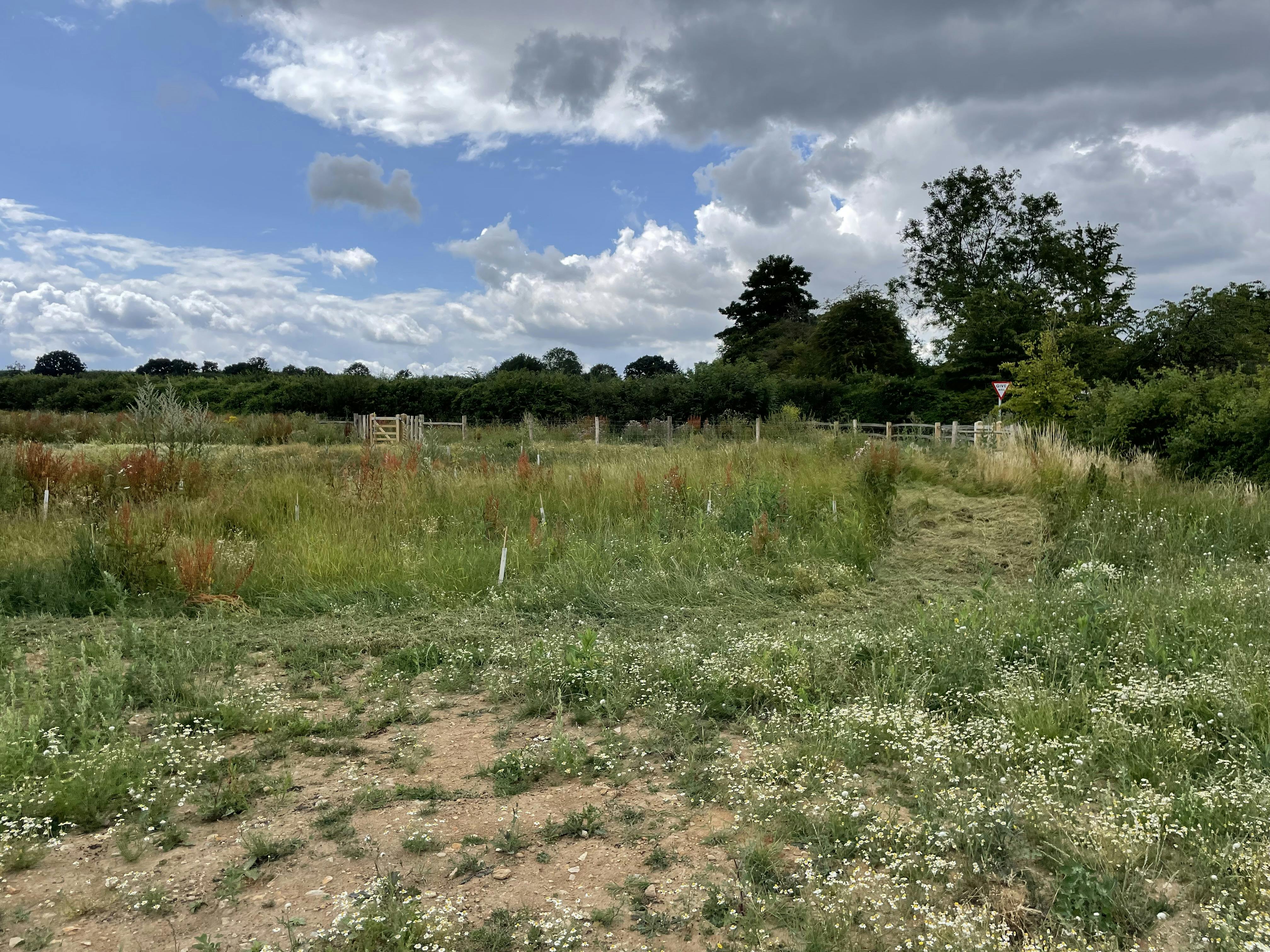
The process began with our expert botanical surveyors assessing BMAT landholdings to determine the current biodiversity value according to UKHab habitat classification and condition assessment criteria. Our ecologists worked closely in conversation with BMAT to develop fully-costed habitat proposals and land management plans that would maximise biodiversity outcomes while ensuring that effective long-term management is realistic and achievable, and that the site will be accessible and enjoyable for local residents. We strive to integrate a diverse mosaic of habitats to reflect natural ecosystems and support a wide range of species. Our plans for Lyewood therefore include the development of a wildflower-rich meadow grazed by rare breed livestock, a small wetland area, a chestnut coppice, and native woodland planting.
Once plans were agreed upon by all parties, we assisted BMAT in preparation of all necessary documentation for submission to the local planning authority so that funding could be released to begin restoration activities.
Works began in the summer of 2023, with the ground prepared for the species rich meadow with ponds and new walking trails. In addition, volunteers of all ages from the local community have joined two big tree planting events at Lyewood, with over 600 trees already planted for the woodlands. Friends of BMAT, as the volunteer group are known, are passionate about bringing the community together to get outside, and take pride in improving community green spaces. A footpath running through the site is already open and well used, meaning residents will get to enjoy watching the site become more wildlife-rich each year, and see the trees they planted develop into mature woodland.
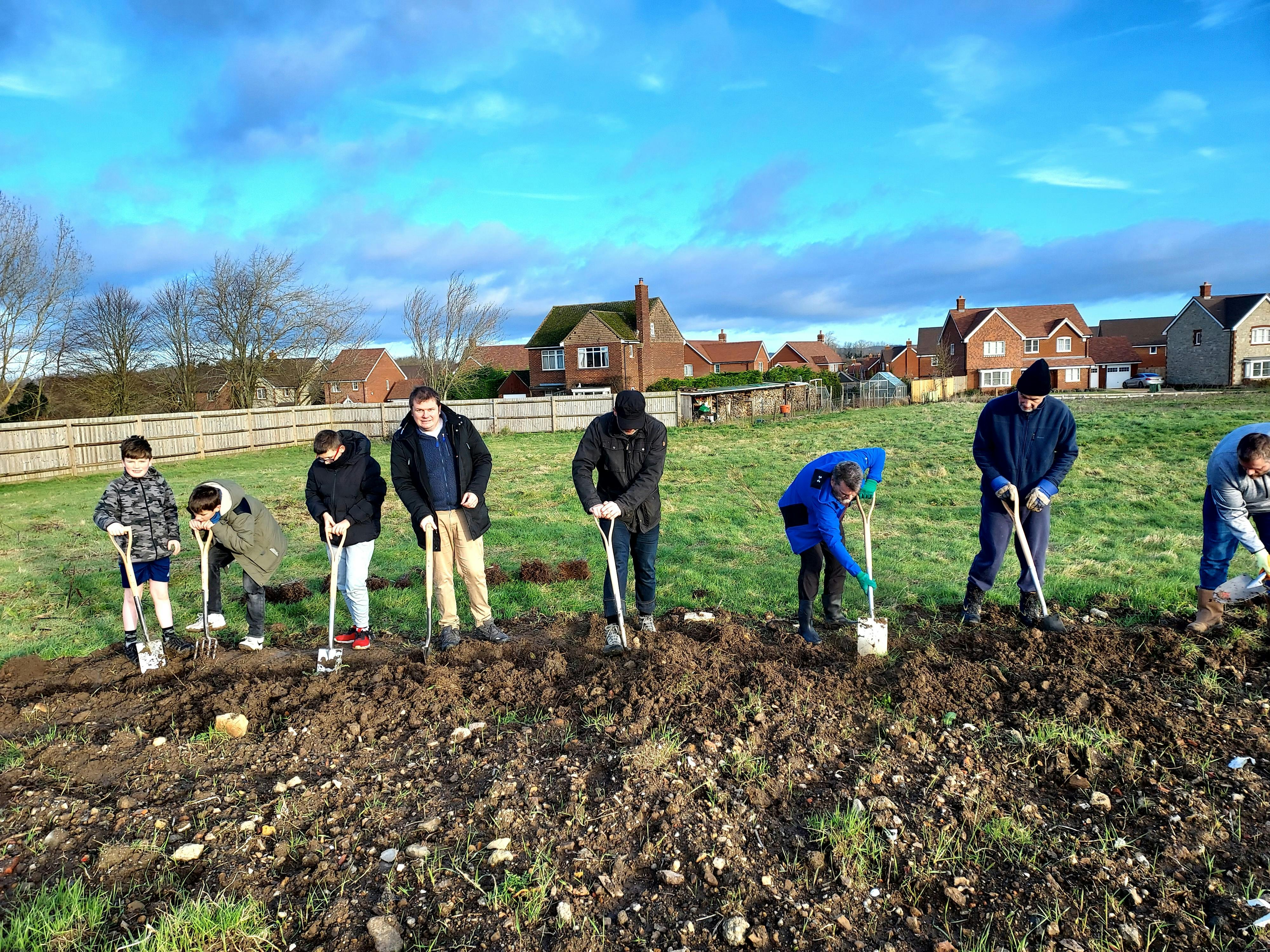
Our work at Lyewood is a prime example of how mandatory BNG can not only hold developers accountable for their environmental impacts, but provide real benefits to ordinary people and unite communities. Easy access to high quality green spaces is incredibly important for mental and physical health, and ensuring communities feel connected to the nature we depend upon for life is critical in fighting the climate and biodiversity crises. However, 1/3 of the population unable to access green space easily from their homes, a figure which we hope mandatory BNG will be instrumental in changing. As January approaches, we look forward to developing more ambitious projects like this with forward-thinking clients.
If you think you might have a site that could be suitable for a BNG offset project, or you are interested in purchasing high-integrity BNG units from sites in Kent, please do get in touch and we will be happy to discuss how we could help.
